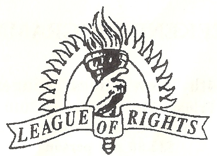Austria’s Demographic Shift: Migration, Birth Rates, and the Path to a White Minority, By Richard Miller (Londonistan)
Austria, a nation of 9.1 million, is undergoing a profound demographic transformation, driven by high immigration and starkly divergent birth rates between native-born Austrians and migrant populations, particularly from Muslim-majority countries. Data from the 2025 Statistical Yearbook on Migration and Integration reveals that women from Syria, Afghanistan and Iraq, have a fertility rate nearly three times higher than native-born Austrian women, 3.3 children per woman compared to 1.22. Coupled with sustained immigration and an aging native population, these trends suggest that ethnic Austrians, primarily of white European descent, could become a minority within decades. This blog post explores how Austria's demographic changes, fuelled by migration and differential fertility, are reshaping its cultural and social fabric, raising concerns about integration, education, and national identity, and a deliberate ethnic transformation, known as the Great White Replacement.
Austria's population has grown steadily, reaching 9,159,993 in 2024, largely due to immigration rather than natural increase. Since 2020, deaths have outpaced births, with a total fertility rate (TFR) of 1.32 in 2023, well below the replacement level of 2.1. Native-born Austrian women average 1.22 children, while non-Austrian-born women average 1.57, with Syrian, Afghan, and Iraqi women at 3.3. This gap is amplified by age differences: native mothers average 30.4 years at first birth, compared to 26.2 for these refugee groups, allowing for more childbearing years.
In 2023, 26.4% of Austria's population had a migration background, with 19% being foreign nationals and 21.7% born abroad. In Vienna, half the population has a migration background, with 44.4% of residents of foreign origin. Immigration, particularly from EU countries like Germany and Romania, and non-EU nations like Syria and Afghanistan, drives growth. In 2022, Austria received 93,000 long-term immigrants, including 18% humanitarian migrants, and over 100,000 Ukrainian refugees by 2023. Without immigration, Austria's population would shrink to 1950s levels.
Projections from Statistics Austria estimate the population will hit 9.43 million by 2030 and 10 million by the 2050s, with growth entirely dependent on immigration. By 2060, the proportion of elderly (65+) will rise from 18.6% to 28.1%, while the youth share (under 20) will dip to 19%. If current trends hold, low native fertility, high migrant fertility, and steady immigration, ethnic Austrians could become a minority by the 2050s or 2060s, particularly in urban centres like Vienna, where non-native populations already dominate certain districts.
The high fertility of refugee women, especially from Muslim-majority countries, is partly attributed to the "arrival effect," where migrants have children soon after settling, as seen with Bosnian refugees in the 1990s and Syrians post-2015. This effect, combined with younger maternal ages, accelerates population shifts. For example, in Vienna, over 75% of middle school students in 2024 spoke a non-German language at home, straining an education system built for monolingual instruction. Reports of cultural clashes, assaults on teachers, demands for burqas, and mock executions, highlight integration challenges, with 20 teachers quitting daily in 2024.
These shifts fuel debates about "rapid Islamisation," as voiced by educators like Christian Klar, who argue that cultural differences are reshaping societal norms in ways that conflict with Austria's secular traditions. A 2024 report from the Office for the Protection of the Constitution, noted rising Islamist radicalisation among young girls in Upper Austria, further stoking fears. Politicians like Herbert Kickl of the Freedom Party, frame this as a "consciously controlled ethnic and cultural transformation," alleging deliberate policies to promote migration.Lax immigration policies and high refugee intakes since 2015 (e.g., 88,098 asylum applications in 2015, 112,272 in 2022) amplify perceptions of mismanagement, or deliberate replacement.
The demographic trajectory toward a white minority hinges on three factors: low native fertility, high migrant fertility, and sustained immigration. Austria's TFR of 1.32 contrasts sharply with the 3.3 TFR among certain refugee groups. If these rates persist, the proportion of ethnic Austrians (88.6% native German speakers in 2001) will decline as migrant populations grow. By 2060, Vienna could see a majority non-native population, with other regions following. Posts on X, like @ModernityNews, emphasise this rapid change, noting Muslim families' higher birth rates as a key driver.
Immigration compounds this. Between 1992–1995, Austria absorbed 86,500 Bosnian refugees, and post-2015, it became a top destination for Syrians and Afghans. EU membership since 1995 boosted inflows from countries like Germany (225,012 residents in 2023), while humanitarian migration remains significant. Aging also plays a role: the native population's average age is 42.5, projected to hit 47 by 2060, reducing the reproductive pool. Meanwhile, younger migrant populations sustain growth.
Critics on X, like @BGatesIsaPyscho, point to cities like Vienna, where 44.4% of residents are of foreign origin, as evidence of a "Great Replacement" unfolding in real time. These sentiments tap into fears of cultural erosion, especially as education systems strain and radicalisation concerns grow. Dismissing this as mere xenophobia ignores legitimate worries about social cohesion, especially when integration lags, as seen in Vienna's schools.
Austria's government has responded with measures like orientation classes for migrant children to address language and cultural gaps, though these are strained by students' lack of basic literacy or respect for authority. Policies like the 2023 Red-White-Red card expansion for skilled workers and agreements with countries like the Philippines, aim to balance labour needs with integration. Yet, proposals like a "refugee card" to limit welfare transfers abroad, reflect growing political pressure to curb immigration's impact.
If trends continue, ethnic Austrians could be a minority by the 2060s, particularly in urban areas. This isn't unique; similar trends are seen in the UK, Italy, Spain and much of Western Europe, which is embracing ethno-racial suicide, but Austria's rapid change, especially in Vienna, amplifies tensions.
https://www.americanthinker.com/blog/2025/08/the_climate_cult_is_a_death_cult.html


Comments